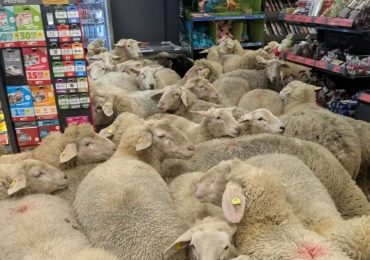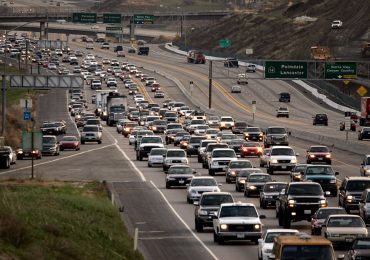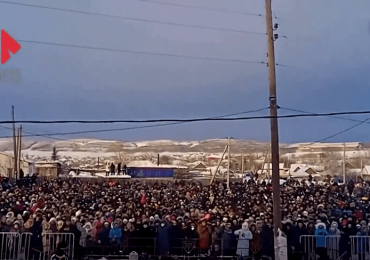The general tone of most industry conferences tends to be akin to a sector-specific pep rally. But at an anti-factory-farming summit last month in Denver, the tenor of discussions was more like a group therapy session. The words “Adversity. Strength. Resilience,” were posted on the covers of schedule handouts. Signs posted around the event contained somber messages: “Giving up on reducing societal meat consumption is not an option.” At the opening ceremony, one slide pointed to the adversity ahead. “No matter the odds, we must strive to create a more sustainable, healthy, and compassionate world.”
[time-brightcove not-tgx=”true”]
The conference’s host, the Reducetarian Foundation, is one corner of the broader universe of groups opposed to factory farming. The foundation speaks for a coalition of animal welfare advocates, climate activists (meat production is responsible for about 14% of humanity’s greenhouse gas emissions), and alt-protein entrepreneurs. But recently, sinking fortunes in that world have made their shared goal of cutting global meat consumption seem much farther off, or almost out of reach.
“It’s been a tough year,” says Brian Kateman, director of the Reducetarian Foundation. What really matters to Kateman is how much meat is being consumed globally each year—and despite all the much-hyped alt-meat startups, that number is rising. “I can’t stand up onstage and tell people that everything is going perfectly well, because at the end of day, that’s the number I look at,” he says.
This is a stark contrast to just a couple years ago when spirits were high across the alt-meat world. Big early players like Beyond Meat and Impossible were growing fast, while venture capitalists were plowing cash into new, smaller competitors. That innovation, and the big money fueling it, buoyed spirits amongst people who wanted to cut meat consumption for ethical or environmental reasons. It seemed that sophisticated faux-burgers would be able to cut into meat’s market share—and its environmental impacts—where tofu and tempeh couldn’t, and the era of peak meat seemed to be at hand.
But the era of good vibes didn’t last long. In recent months, rising interest rates have cut off flows of cheap startup cash, while inflation has squeezed consumers, causing many to forgo expensive meat alternatives. Meat industry messaging campaigns have affected consumer perceptions, seeding the idea that the new alternatives weren’t healthy (the science on the real health trade offs is fuzzy, and also depends on which meat substitute one chooses). And there may have been real weaknesses to the much-hyped products themselves, with sellers often seeing a lot of people trying their meatless sausages or burgers a few times, but far fewer making those substitutes a consistent part of the dinner rotation.
The result has been a period of financial hardship among ventures trying to take the meat out of meat. Bigger players like Beyond have taken a thrashing, while many of the smaller companies have closed up shop.
For some people at the conference, though, it wasn’t all bad news. Meati, a company that makes vegan chicken and steak alternatives out of mycelium, the thin, rootlike structures grown by mushrooms, laid off 20% of their staff in September to cut costs. But over a beer at the Denver Westin, Morrad Fadel, VP of innovation and commercialization at vegan chicken and steak company Meati, said that thinning out the competition can give good products more room to shine. The alt-protein space, he says, is akin to boomtown Denver in the 19th century, when the gold rush attracted settlers who built wooden structures, which later burned down and were replaced by more sturdy brick and mortar buildings. “That’s what Meati is doing right now, is becoming the brick and mortar of the alternative meat category,” Fadel says. Making money in the current financial environment is still hard, though; the company laid off 20% of its staff in September to cut costs.
A version of this story also appears in the Climate is Everything newsletter. To sign up, click here.
Some entrepreneurs say they’re learning from the recent hardships in the sector. Parendi Birdie, an entrepreneur working to develop so-called “blended meats,” or meat replacements that contain some amount of real meat, says a lot of the advertising from the prior generation of meat alternatives focused too much on making the intellectual case for meat alternatives, trying to convince consumers that they were healthier and more ethical. “The ultimate reason that we buy meat is more for that deeper unconscious satisfaction,” Birdie says. “I think leaning into that indulgent imagery and language [in advertising] is going to be important.”
To some observers at the Reducetarian Summit, though, it was clear that the entire model of venture capital-backed food startups has serious issues. David Meyer, CEO of meat reduction nonprofit Food System Innovations, says that VC-backed alt-protein companies faced a lot of pressure to hype their products, and to make rosy projections about how long it would take consumers to start buying them en masse. The reality of building food businesses to that scale, though, was always going to be much more difficult, a reality on full display now as the prospects of early leaders slump.
A lot of that difficulty has to do with the costs of scaling: the so-called “valley of death” between small-scale pilot-production facilities and the truly monstrous installations businesses need to reach global scale and achieve economies of scale. Meanwhile, getting around some of the more fundamental issues holding back alternative meat—that so far, no one has created something actually indistinguishable from the real thing—may take more basic research, perhaps at university labs.
Ultimately, though, Meyer thinks that companies looking to sell new products to replace meat at the dinner table are going to be successful, if only because humanity has little choice. “It is the climate that’s going to drive it,” Meyer says. “We literally cannot meet our Paris [Agreement] climate goals without reforming the animal food system, and replacing it with something much more sustainable.”
Leave a comment
















